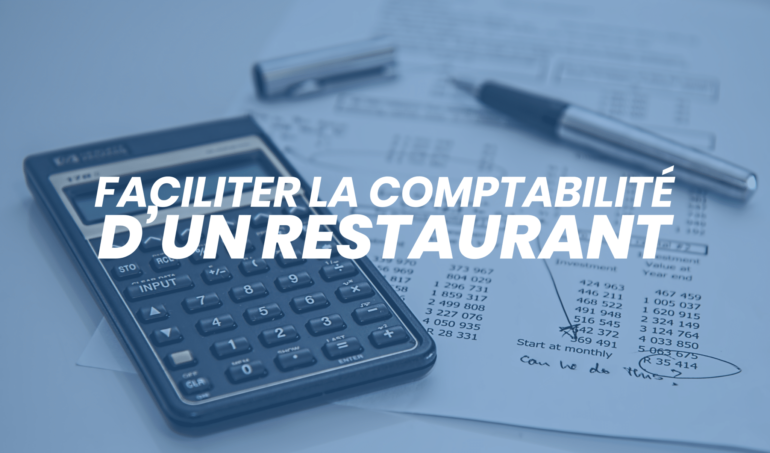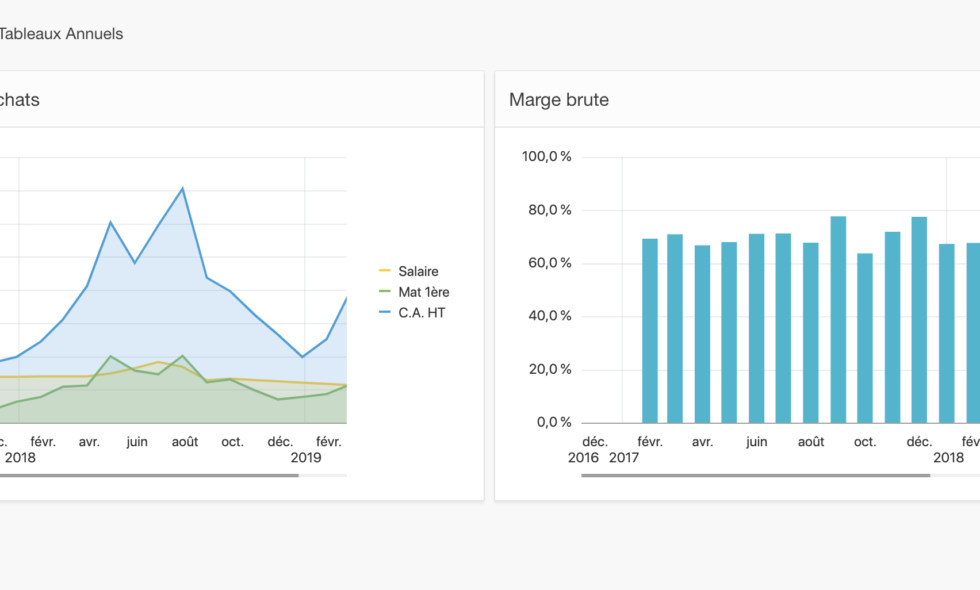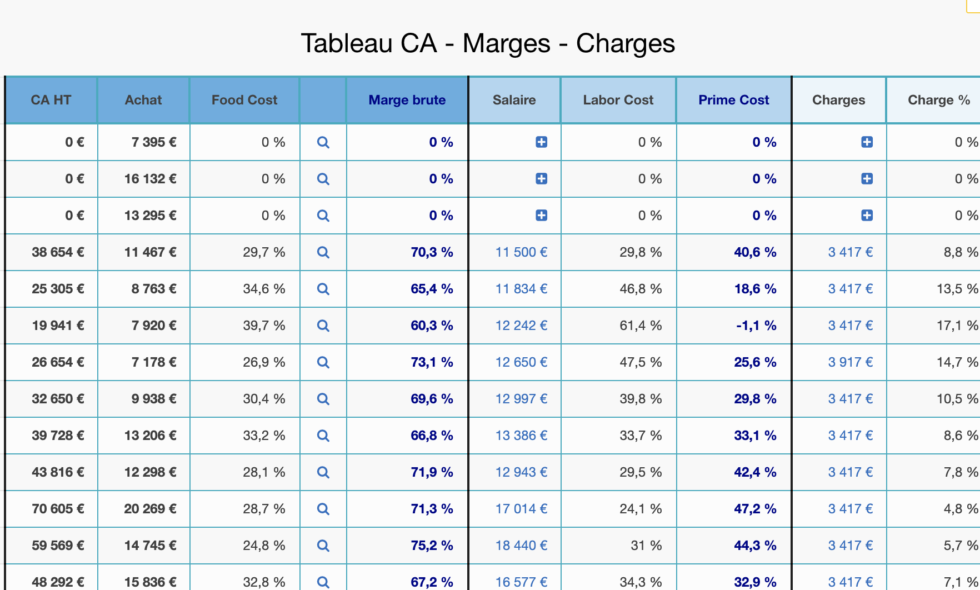
Facilitate restaurant accounting
Monitoring a restaurant's accounts is necessary for the smooth running of the business and the financial health of the company. The interest of the follow-up of the latter is to ensure a complete follow-up of your expenses and products. As a result, you will have relevant information on the profitability of your establishment.
The simplest and most effective way is to follow key indicators so as not to get lost in the numbers. In the restaurant business, the gross margin (or food cost) and the payroll should be monitored every month. In fact, materials and salaries are the two most important items of expenditure in this sector.
Key indicators to monitor
Les enseignes qui ont les meilleurs résultats financiers choisissent et définissent uniquement quelques paramètres importants à suivre. Ils rentrent davantage dans les détails dès que des actions sont nécessaires pour vérifier le bon fonctionnement de leur entreprise.
These indicators allow immediate decisions to be made as soon as results decline. They also measure theeffectiveness of actions taken in the previous weeks.
Allocating purchases in a restaurant's accounting system
Ensuite, la comptabilité d’un restaurant doit être utilisée avec des chiffres hors-taxes, c’est-à-dire que vous ne comptez pas votre TVA, étant déductible, elle n’est pas affichée sur votre déclaration. Les calculs sont de ce fait simplifié.
Here is an example of the account numbers you use to assign your different purchases to differentiate between food and other purchases.
| Purchasing | Account number (account code) | Wording |
| Foodstuffs | 601 100 601 200 | 5.5% purchases 20% purchases |
| Maintenance products | 602 200 | Maintenance products (if stored) |
| Small supplies | 606 300 | Small supplies |
Assigning sales in restaurant accounting
Donc, la comptabilité d’un restaurant nécessite une tenue stricte et règlementée. Votre logiciel de caisse doit aussi être conforme à la législation.
Les boissons alcoolisées sont généralement taxées à 20 %, tandis que les autres denrées et boissons non alcoolisées sont taxées à 10 % pour les ventes sur place. Les ventes à emporter sont souvent taxées à 5,5 %.
| Typology of the restaurant | Account number | Wording |
| Catering on site | 701 100 701 200 | 10% sales 20% sales |
| Catering to go | 701 050 701 100 701 200 | 5.5% sales 10% sales 20% sales |
Important indicators in restaurant accounting
Le suivi de votre restaurant nécessite le calcul de certains taux et ratios. Ces calculs vous seront utiles pour votre comptabilité, mais aussi vis-à-vis de la concurrence.
Calculation of the gross margin rate
The margin rate is calculated using your gross margin in relation to your sales.
Taux de Marge = 1 – (achat denrée alimentaire/Chiffre d’affaires)
Exemple : Taux de marge = 1 – (300/1000) = 1 – 0,3 = 0,7 soit 70 %.
Your food cost is equal to = 1 - gross margin
The rate of salary charges
Vous pouvez aussi calculer votre labour cost (taux salaire) de la même façon :
Taux salaire = 1 – (Salaire total/CA)
Other accounting accounts
Purchases are variable charges. Other operating expenses are usually rather fixed. For example, electricity, gas, water, insurance, subscriptions, advertising or rent will be tracked in separate accounts.
Analytical control of food costs
In order to organize the management of the restaurant, procedures for purchasing, from the reception of food to the sale guarantee optimal quality.
- Organization of storage
- Method and control of production
- Méthode d’établissement des prix (ratios, marges moyennes)
- Stock turnover rate
- Periodicity and method of inventories (by storage area or product category)
- Detection of stock deviations
- Method for identifying known and unknown losses,
- Breakdown of solid/liquid costs
Synthetic balance sheet in restoration
How to read your balance sheet
Lorsque vous effectuez la comptabilité de votre restaurant de façon optimale, vous pouvez aussi analyser, sur des périodes déterminées, toutes les dépenses et les profits. Grâce à ces informations, vous pourrez connaître à quelle période de l’année votre restaurant est rentable ou non et par conséquent, vous pourrez renforcer la productivité de votre affaire.
Keep track of your accounting during the year
It is important to follow the evolution of its "food cost" at leastevery month . In general, the inventory of raw materials is carried out every month in order to establish the calculation of the gross margin or the "food cost".
the precise formula with the food cost inventory is:
FOOD COST = (INVENTAIRE fin période – INVENTAIRE début période + ACHAT matières premières) / Chiffre d’affaires
And, to learn more about restaurant inventory, see our dedicated article.
Tools to monitor the important indicators of its accounts
Dans la courbe ci-dessous à gauche, vous pouvez donc visualiser l’évolution du Chiffre d’affaires, des coûts matière première et des charges salariales au fil des mois.
Sur l’autre graphique, on peut aussi suivre l’évolution de la marge sur l’année pour mesurer les résultats des actions menées et des décisions à prendre.


Thanks to the dashboard offered by the Koust application, you can visualize in one click the details of your turnover, your margins and even your operating expenses.
Other graphs and tables also allow you to visualize with a single click the progress over the year with cumulative calculations over 12 months.
Koust is also a complete software to manage your restaurant, try our solution today and for free!

